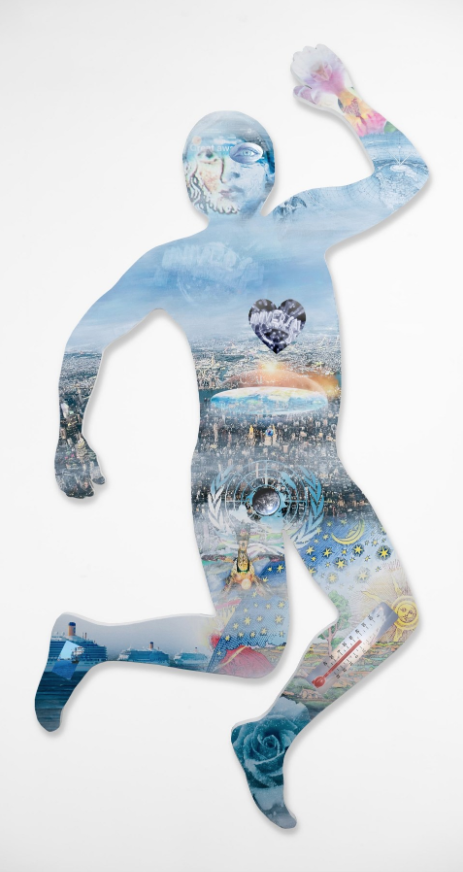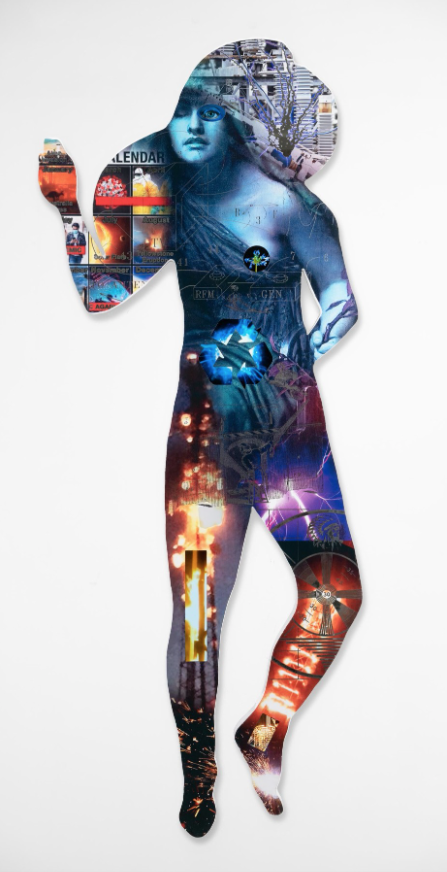mAcHiNe E.L.F.
February 23 – March 25, 2023
Lehmann Maupin, New York, New York
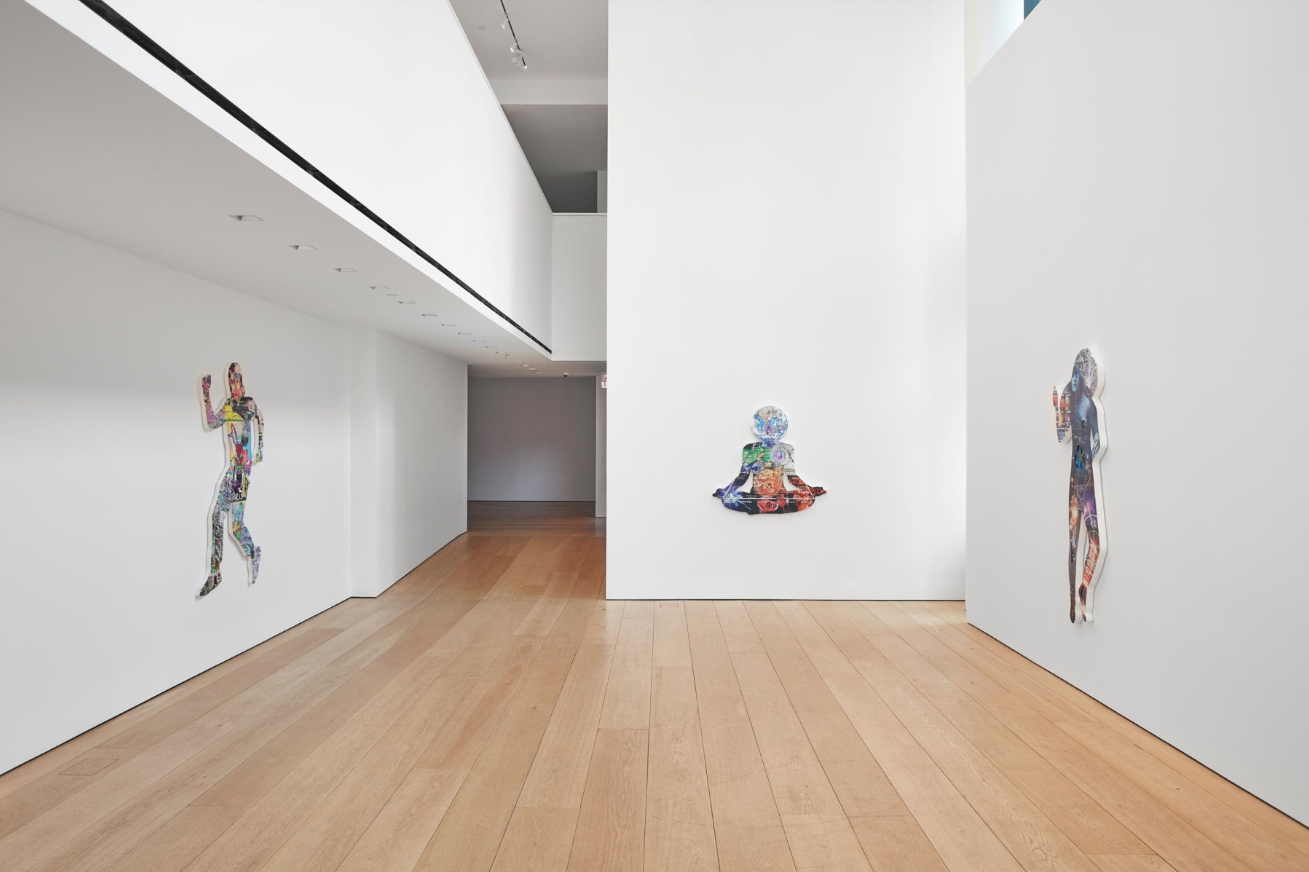
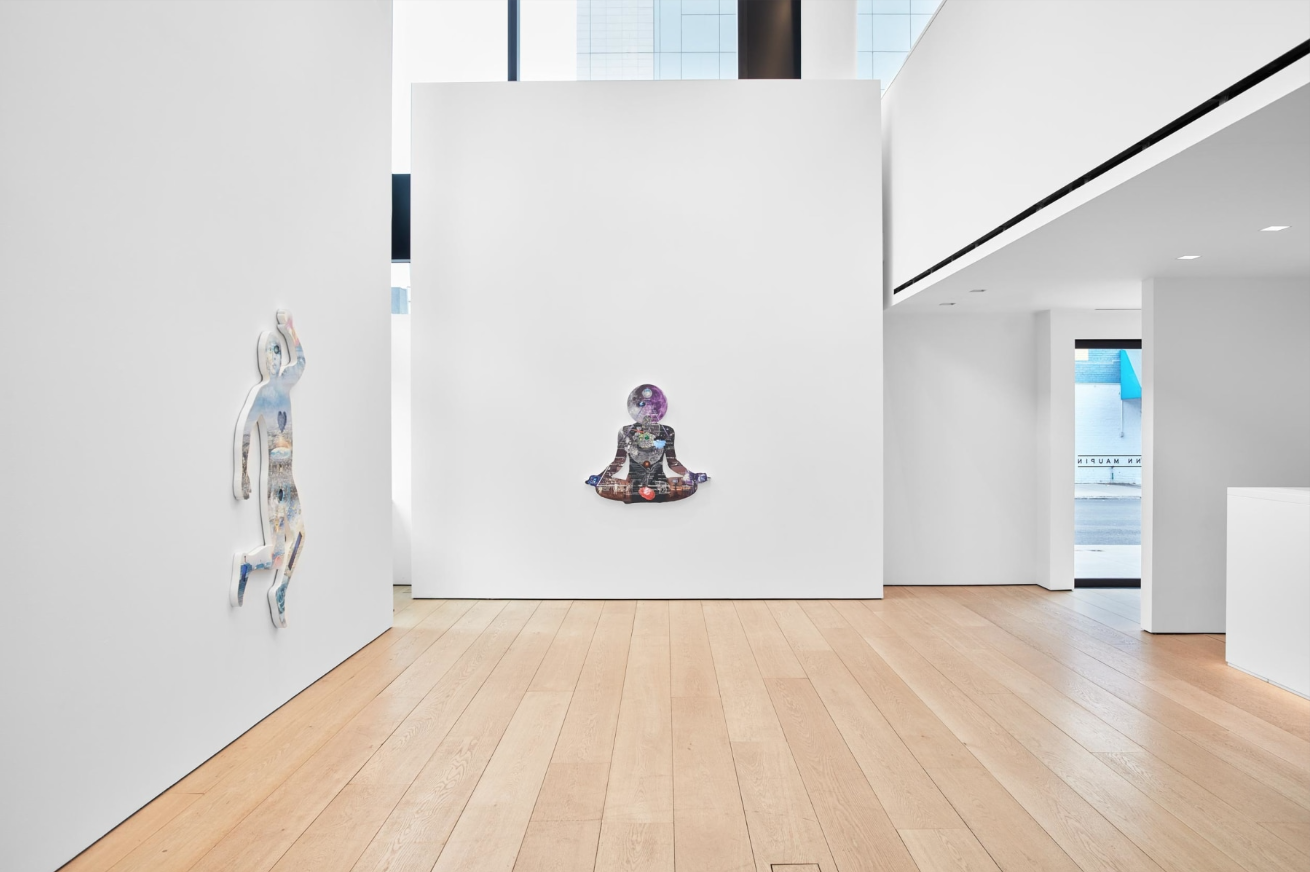
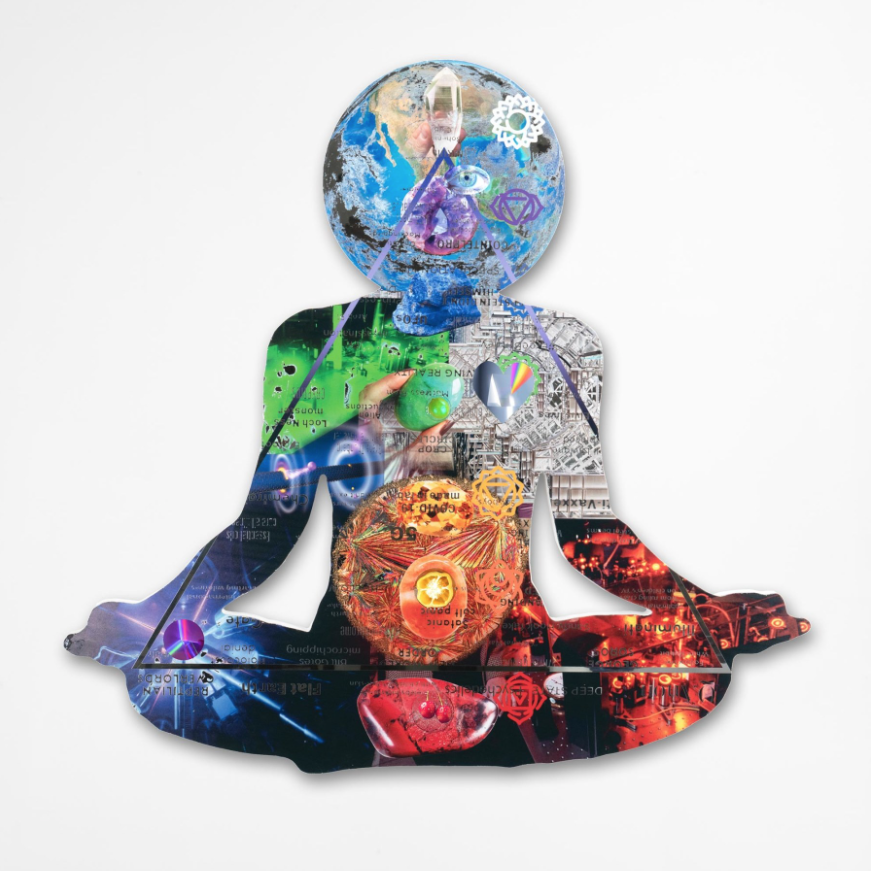
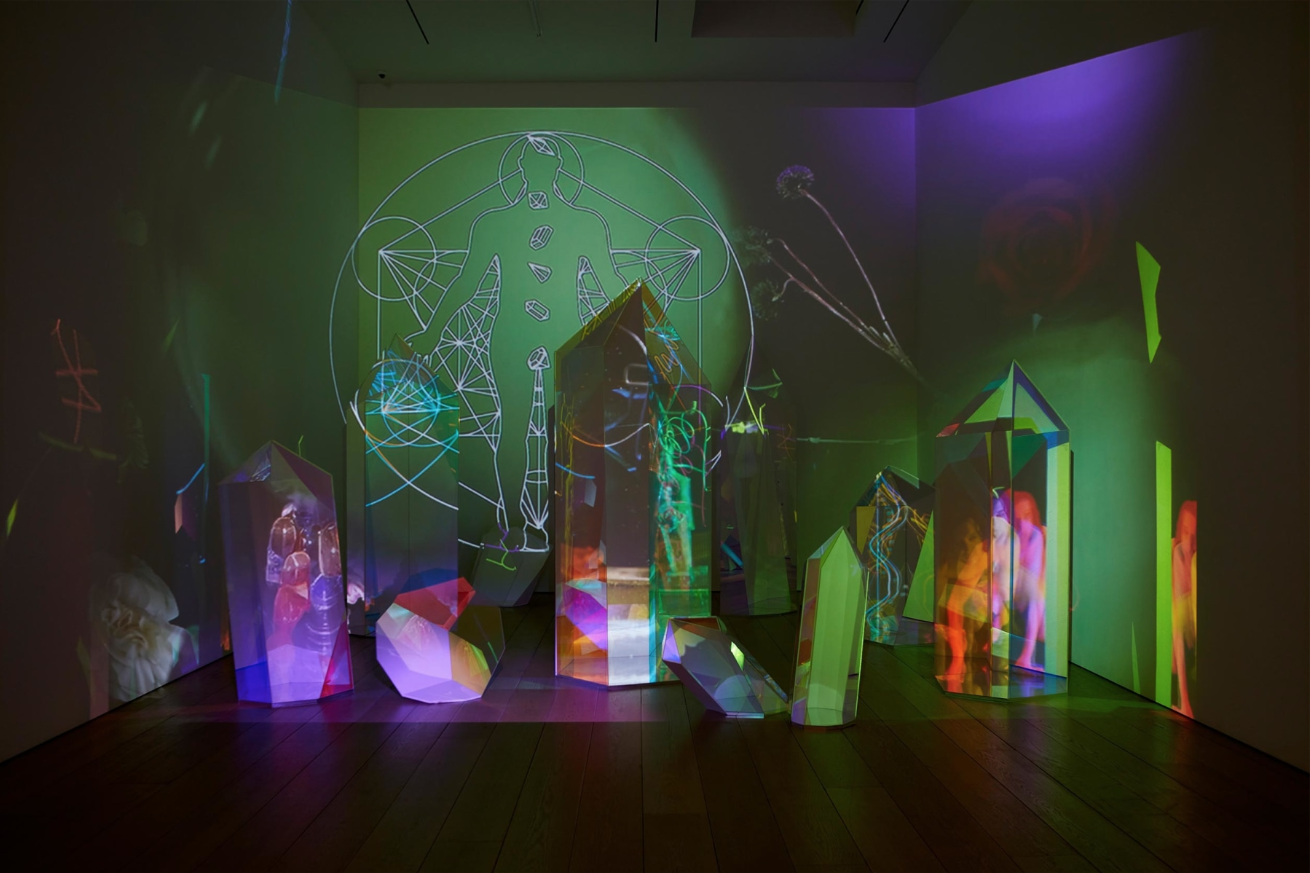


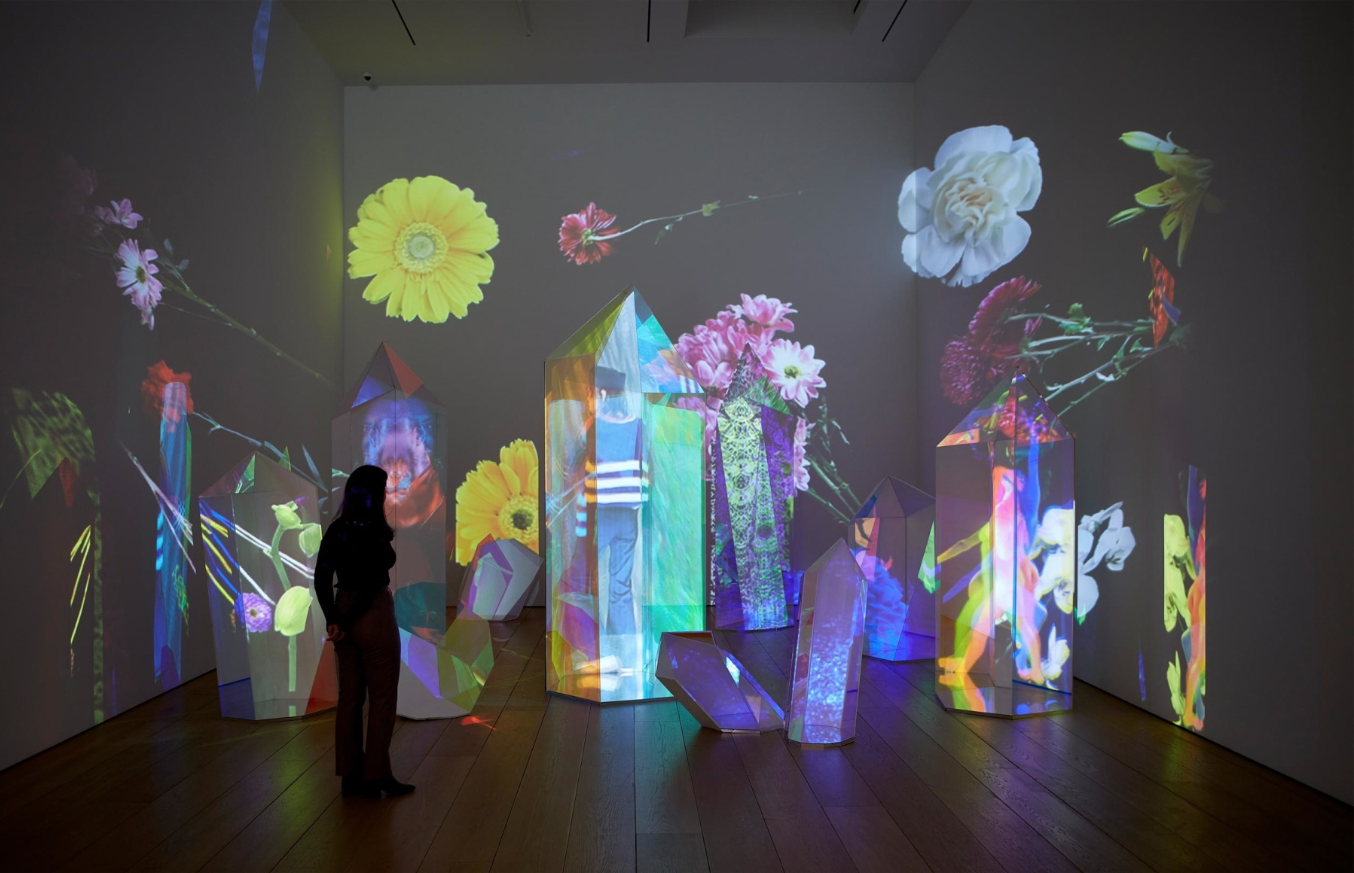
“Any sufficiently advanced technology is indistinguishable from magic.”
–Arthur C. Clarke
For his latest exhibition the artist has created a series of “electrified” silhouettes that feature painted and printed collages interspersed with embedded digital displays, as well as an immersive, large-scale installation of optical crystal structures that act as reflecting screens for a kaleidoscopic digital projection of otherworldly performers and hand drawn and AI-generated animations.
Using the classic form of the silhouette, the mirror-printed panels in mAcHiNe E.L.F. contend with alternative contemporary worldviews—from Luddites and technophobes burning 5G towers to utopian dreams of cold fusion, moon landing hoaxes, and nautical equator crossing rituals. Each work invites the viewer to contemplate the visual culture of science and magical thinking, and Ourlser identifies a creative space between scientific inquiry and occult belief where new paradigms can be generated, but where the risk of conspiracy theorizing is high. Across each collaged panel, the artist embeds iconography from conflicting conspiracies, environmental concerns, and subcultures—including in one instance the United Nations emblem, which is believed by some to contain a hidden version of the flat earth map. These "easter eggs” are identifiable by in-the-know viewers and simultaneously reflect the belief that a deeper truth is hidden just beneath the veneer of the conventional world.
In the second gallery, Oursler has created a large-scale installation inspired by the seven fundamental crystal structures that occur in nature. For the artist, these geometric forms contain two coexisting extremes: hard science and the mythic. In telecommunications and electronic circuitry, crystals are prized for their resonant quality, which allows them to synchronize signals with a high degree of accuracy. When used in mobile phones and computer CPUs, these organic structures coordinate timing, functioning as the “heartbeat" of modern technology. Crystals are also valued for their aesthetic and pseudoscientific properties, which some believe to have healing effects. In New Age discourse, different types of crystals are assigned particular psycho-spiritual or protective properties, and are thought to carry specific energies that can be amplified by exposure to the light of the full moon.
In mAcHiNe E.L.F. (2023) Oursler assimilates all of these references into one of his classic immersive environments. The large-scale crystal forest reflects whirling digital video imagery from an overhead projection, and the structures incorporate various transparent materials, such as shaped mirrors and dichotic refraction screens, which amplify and colorize the images depending on the viewer's perspective. For this piece, Oursler worked with a large cast of characters, many of whom are longtime collaborators—artists and performers include Constance DeJong, Jim Fletcher, Jason Scott Henderson, and Katiana Rangel. Combining new and archival footage with interventions from AI technology, he explores a series of poetically associated themes in the work, including the digital sublime, melting ice, four-dimensional creatures, extremely low frequencies (ELF), 5G technology, intragroup dynamics, near death experiences, DMT, and Photo 51.
Across the exhibition, Oursler examines how as the average person becomes more distant from highly specialized scientific understanding, science is increasingly translated into myth by the general public. At the same time, he recognizes that the development of rationalism and rise in scientific thought has resulted in a process of societal disenchantment and a decline in spirituality. The artist draws inspiration from this paradox, which he describes as “the current re-enchantment of America,” and in this newest body of work Oursler aims to pull back the veil—revealing the science behind the spectacle while acknowledging space for the mystical beyond the edge of human knowledge.
